Change Management in the Age of AI: Context, Convergence, and the Path to Real AI Transformation
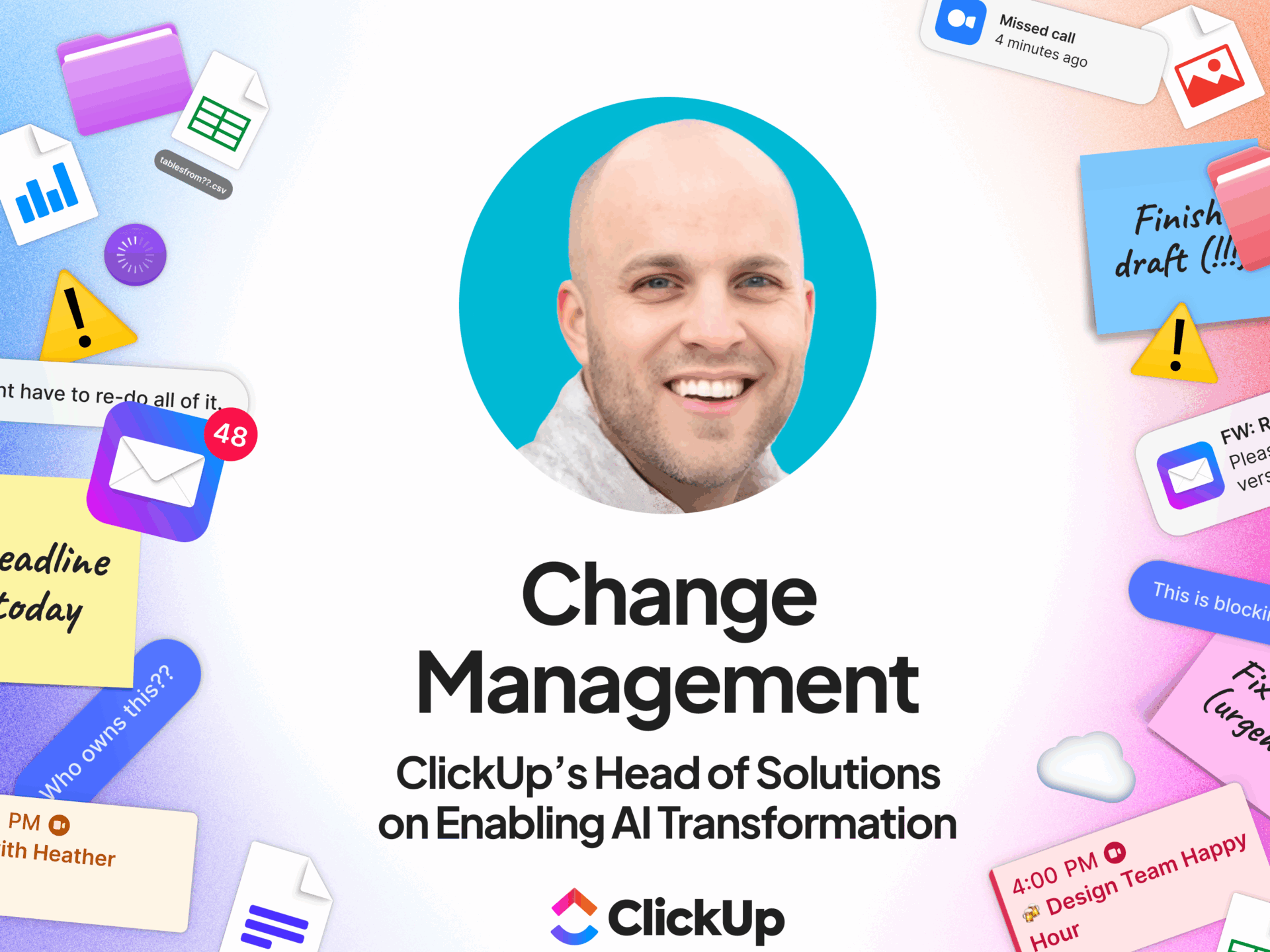
Sorry, there were no results found for “”
Sorry, there were no results found for “”
Sorry, there were no results found for “”
If you’re leading a team or an organization today, you know the ground is shifting beneath your feet.
The pace of change in the workplace is relentless, especially when it comes to navigating AI transformation. I’ve spent my career helping organizations adapt, and I can say this with certainty: the real difference between teams that thrive and those that stall isn’t the toolset—it’s how effectively they manage change.
And the urgency to get it right has never been greater.
Without the right change management, investing in new technology is not going to give you the results you seek. Leaders need to think deeply about how work gets done, how teams collaborate, and how value is created from new tools.
The stakes are higher than ever, and the urgency to get AI change management right has never been greater.
Before joining ClickUp, I managed business systems at a large healthcare company. We had every SaaS tool you could imagine, including accounting, HR, engineering, marketing, and investment platforms.
Each team had its own favorites, and none of them talked to each other. The result? Persistent bottlenecks, lost hours, and constant IT interruptions just to get a status update.
This is Work Sprawl: the proliferation of disconnected tools, fragmented workflows, and lost context—an obstacle to effective change management. To frame it as an IT problem misses the point. It’s a business problem, plain and simple.
When information is scattered and teams switch between systems, productivity declines, innovation stagnates, and engagement wanes.
It also extracts a heavy financial toll: $2.5 trillion lost in global productivity.
Even when companies try to fix it, rollouts often fall short.
When we tried to implement Jira for marketing at my old firm, the team dutifully attended the training, but then went right back to their whiteboards. Why? Because we hadn’t explained why the change mattered, how it would help them, or what support they’d get.
Adoption fails not because tools don’t work, but because people don’t see how the change connects to their daily work.
Harvard Business Review found that employees spend 61% of their time passing information around, hunting for it, or updating it across various tools.
Every day, new tools and technologies promise to make work easier, but most organizations just end up with more silos and more complexity. The real breakthrough comes when you converge your work, knowledge, and context in one place—a core principle of successful change management and AI transformation.
Because the truth is that AI, automation, and digital transformation are only as powerful as the context they can access. If you have to feed your AI tool manually every time, you’re still doing double work. The future belongs to organizations that unify context—where work, knowledge, and data live together, and intelligence can operate seamlessly within actual workflows. And this future is coming, whether you’re ready or not.
To understand the real impact of fragmented workflows, we recently surveyed knowledge workers about how they turn conversations into action items. The results reveal a critical gap: most teams still rely on manual or inconsistent methods to track next steps, and very few use dedicated project management tools. This lack of structure means important tasks often slip through the cracks, making it harder for teams to stay aligned and productive.
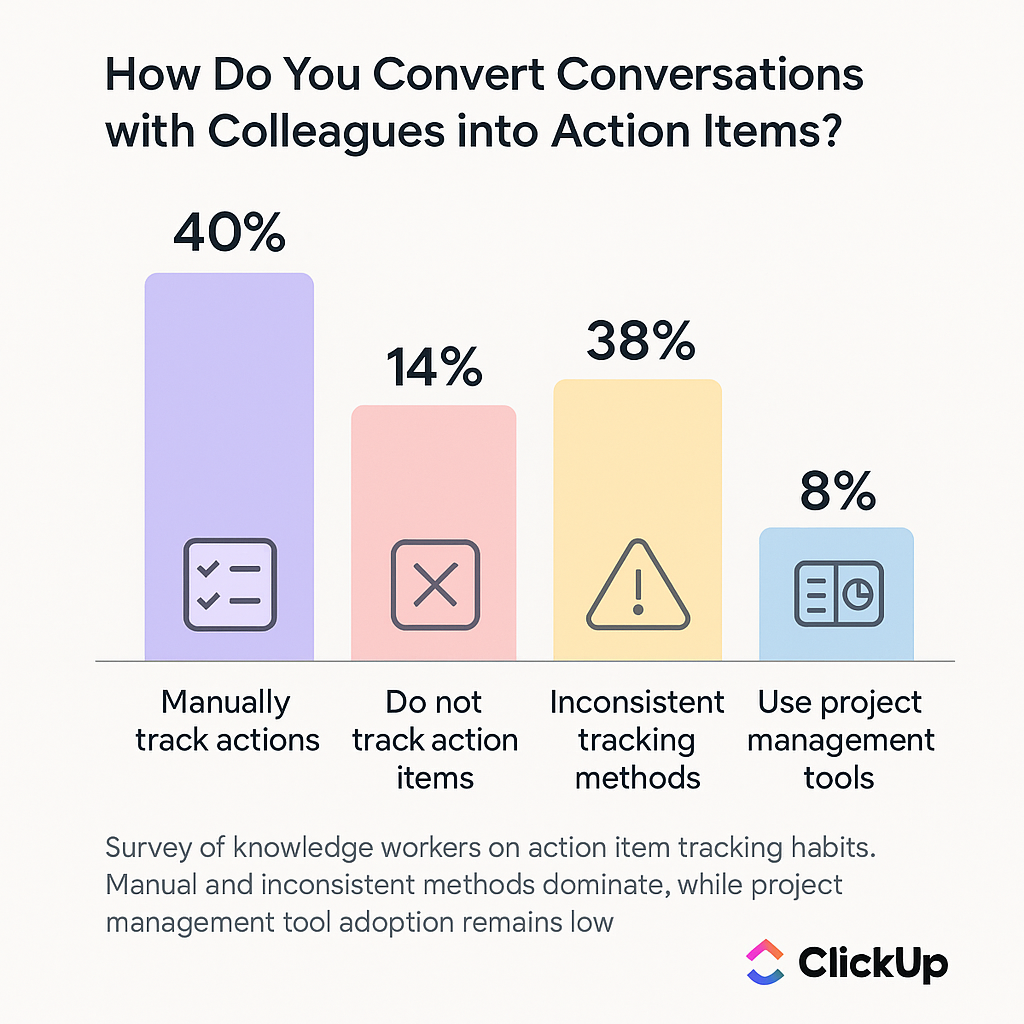
At ClickUp, this is our north star. We were founded to make people more productive, and to do that, we’re going beyond building features to create a foundation where context is unified, workflows are connected, and teams can move faster with less friction. The organizations that act now—who break down silos and converge their work—will define the next decade.
But first, you need a way to understand where you stand today. That’s where the AI Transformation Matrix comes in.
To help organizations see where they are and where they need to go, I use the AI Transformation Matrix—a practical tool for diagnosing your current state and charting a path forward.
Here’s a visual representation of the AI Transformation Matrix:
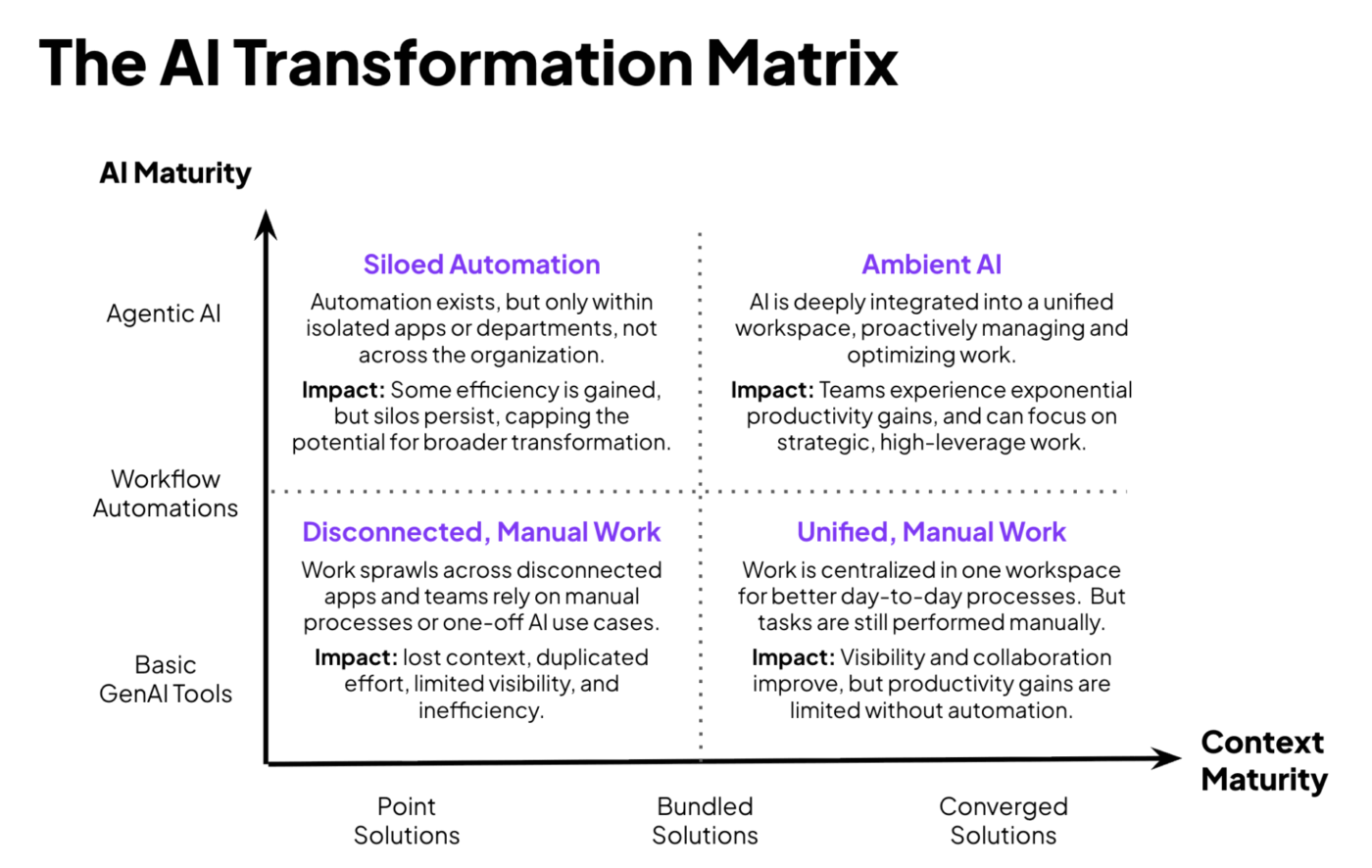
So start by honestly answering the question: Where am I on this matrix? From my experience, most companies think they’re further along than they are.
The next question is: How do I move forward? That’s where change management becomes the bridge.
Understanding your place on the matrix is only the beginning.
The real challenge—and opportunity—is moving toward the upper-right quadrant, a zone that is characterized by high context and high Convergence.
It bears repeating, technology alone won’t get you there. But people will.
The journey from fragmentation to Convergence, from isolated data to unified context, is fundamentally a people journey—and the backbone of any effective digital transformation strategy.
It requires changing mindsets, building new habits, and creating the conditions for sustainable change. The most advanced tools in the world won’t deliver results if your teams haven’t bought in and committed to the idea. You also need leaders who model the way, and flexible processes that support continuous improvement.
I’ll describe this with the four pillars of change management—the levers that move organizations from knowing what needs to change to actually making it happen.
Here’s how the Four Pillars of Change Management show up in practice.

Change starts at the top. The best leaders don’t just approve the change; they dive right in. They use the platform, learn its quirks and value, then communicate the vision and ensure teams have what they need. Executive sponsorship is visible, vocal, and ongoing.
Change imposed from above rarely sticks. The best results come when teams feel ownership from the beginning. Involve team members early, invite them to test-drive the new change, and create feedback loops when they offer suggestions for improvement. Then, invite them to show how the change impacts their work in a meaningful way.
Champions are change agents in your organization who connect leadership and the broader organization. They’re widely respected, innovative, and deeply familiar with how work actually gets done. Champions don’t just evangelize—they build, troubleshoot, and inspire confidence in the change process.
Trying to change everything at once creates resistance. Momentum builds when teams can experiment safely, personalize their experience, and celebrate progress along the way.
Great leaders lead by example, and managers are the linchpin of any transformation. At ClickUp, managers are expected to communicate the “why” and “how,” facilitate feedback, and model the behaviors they expect from their team members.
When we’re helping our customers deploy ClickUp, the process we encourage is the same. And here, our Customer Success Managers (CSM) are a key partner in the transformation.
Successful rollouts don’t happen by chance or on the back of good intentions. They need to be designed and strategized.
One of the biggest blockers to change isn’t outright resistance—it’s friction. People want to adopt new ways of working, but if it means more steps, more tools, or more overhead, they tend to fall back into old, comfortable habits.
This is where ClickUp Brain and ClickUp Brain Max change the game. Instead of asking teams to remember new processes, Brain embeds intelligence directly into daily workflows.
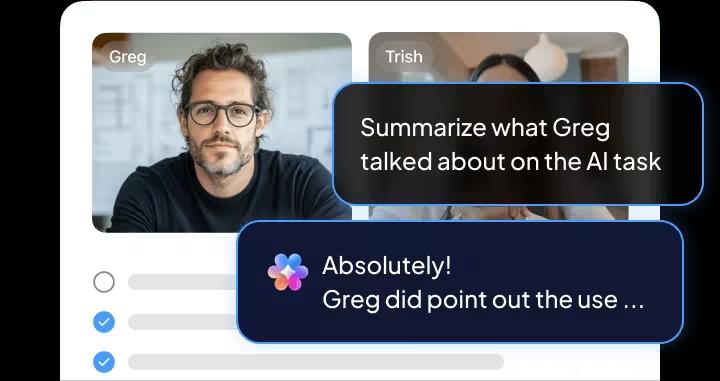
By lowering the cognitive load and making the right actions the easy ones, new habits naturally and sustainably take hold.
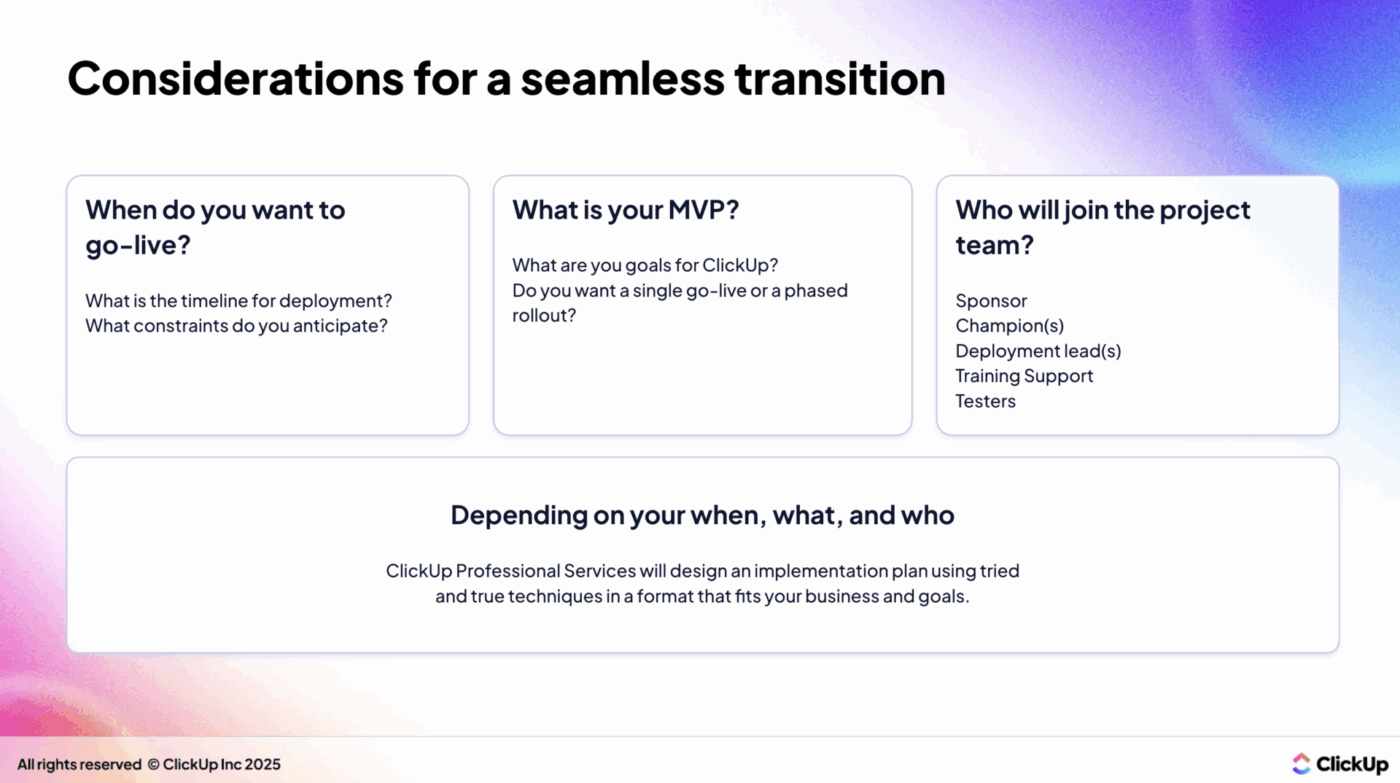
Change management is not a checklist; it’s ongoing work—listening, iterating, and celebrating wins. At ClickUp, we’ve run AI contests, offered incentives, and broadcast successes in company-wide channels. But the biggest impact comes from building habits and showing teams how the tool solves their specific work problem. Nothing hits home quite like seeing your problem get unstuck in front of you.
One of my favorite moments was at a Secret Supper event in Mexico City. I demoed an automated workflow for scoring sales calls and generating campaign content. Watching people realize, “This actually solves my problem,” was a turning point.
Those “aha” moments are what drive real adoption.
The accelerating push toward context convergence—blending workflows, context, and AI—means the window for competitive advantage is shrinking. Organizations that treat change management as strategy—not an afterthought—will outpace the rest.
If you’re starting your own transformation, don’t wait. Start small, celebrate wins, empower your champions, and never lose sight of the people at the heart of change. The organizations that move now—those that unify work context, reduce work sprawl, and drive AI transformation—will define the future of work.
Let’s build something better—together.
© 2025 ClickUp